Mutual Aid Disaster Relief is currently made up of many semi-autonomous working groups with different scopes of work. The direction and activities of each working group is largely set by the working group itself. While working groups have a fair degree of autonomy to carry out activities that fall within their scope, they are all accountable to a larger circle. The working groups sometimes bring proposals to the general circle for ratification, particularly when it’s a matter of concern for the full organization, like amending our internal policies.
The general circle is made up of people who have expressed and shown long-term commitment to the project and meets regularly to help share information between working groups and make decisions that need everyone’s input. Program, operational, and ongoing mobilization working groups meet as frequently as needed. Increasingly, we try to devolve decision-making to the ‘localest’ scale possible (“Subsidiarity”), meaning more decisions are made within smaller working groups, by those closest to the problem and most impacted by the solution, rather than the general circle. Consent is the operative word. We try not to vote, but arrive at a mutually satisfactory outcome for all participants. If one is not comfortable with a decision, they identify and propose new alternatives. Rather than the question, “Do I agree with this 100%”, often the question is “Can I be ok with this?” Just as important, an effort is also made to share decision-making power with affected disaster survivors when at all possible.
Another element of Mutual Aid Disaster Relief’s decision-making is the Steering Committee, which fulfills its duty of care by closely monitoring the activities of the organization, regularly reviewing financials and operational matters, and intervening in decisions it believes to be harmful, overly risky, threatening to Mutual Aid Disaster Relief, or contrary to the mission, but otherwise works in tandem as co-decision makers. They also provide Mutual Aid Disaster Relief with long-term organizational continuity and sustainability, work to build leadership within the national network, and work closely with Mutual Aid Disaster Relief working groups to ensure continuity with Mutual Aid Disaster Relief’s campaigns, needs, and processes.
We also strongly encourage the formation of affinity groups and, if needed, spokescouncils, to promote self-organization and autonomy within Mutual Aid Disaster Relief, especially in the event of a large disaster response mobilization.
This multi-pronged approach has enabled us to remain fluid, dynamic, and responsive to the needs of disaster survivors, and to combine collaborative, participatory decision-making with respect for autonomy.
